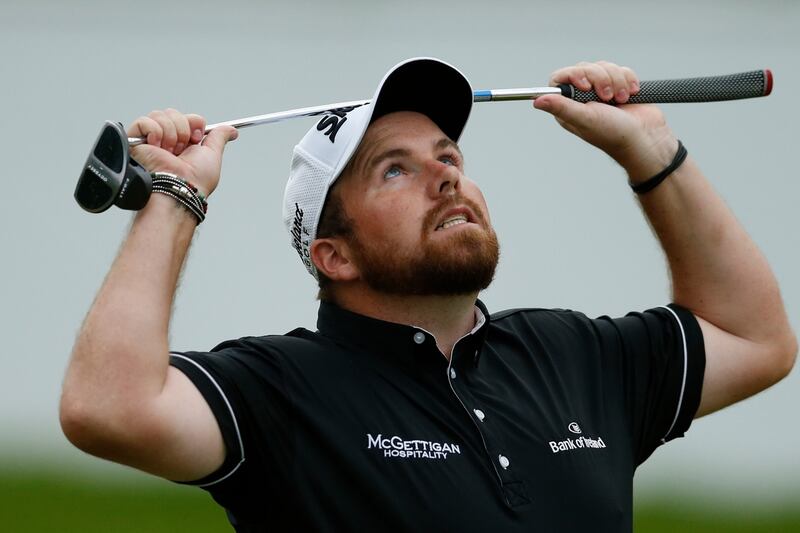This is different.
Normally, players arrive to a US Open knowing the deal: narrow fairways, thick rough, slick greens. Basically, go out, wearing sack-clothes and armed with 14 clubs, and fight for your survival!
Yet, for this 117th edition of the championship, the questions being asked are quirkier, and potentially easier to solve, with Jordan Spieth estimating a winning score of “between five- and 10-under”.
Now, that is a break from tradition; as par – so often protected by the USGA as if some sort of sacred number in building a winning score – is unlikely to be anywhere near sufficient.
So, rather than a protectionist policy, a more aggressive game plan, albeit one requiring some element of care through the fescues and up and down the hills, will be required.
The USGA’s decision to trim back some landing areas – on the fourth, 12th, 14th and 18th – was ostensibly made for fear that any potential thunderstorms would collapse the fescues and make such lies especially penal and possibly unplayable, rather than aimed at appeasing players. Right, we’ll take them at their word on that one. Nothing, we’re sure, to do with some whingeing and whining from players afraid to venture into the long grass?
Anyway, the suspicion that this would be a course – a Par 72 with four Par 5s – only suited to long-hitters has been dispelled as a myth. In practice, medium and even shorter hitters have shown a measure of contentment at what lies ahead.
As Graeme McDowell observed: “It is a bit of an unknown quantity. You look at it and you initially assume long length, bombers; but there is a lot of strategy involved still, there is so many teeing options it is going to be interesting to see what the USGA do.”
What we know is that the greens aren’t as firm, and are more receptive, than you usually get at a US Open. What we know is that the fairways are wider, and that the winds – only up to 10 miles per hour – won’t be causing any mayhem. The unknown is what the USGA will do. Will they employ trickier, putting pin locations on slopes?
Rules decisions
And given the controversy which surrounded last year’s final round at Oakmont, the USGA this time has implemented a number of on-course review stations equipped with tablets to help speed up rules decisions as any arise.
It appears to be a very open US Open. There is also the factor that many of the leading lights have had disruptive build-ups. World number one Dustin Johnson missed the cut on his last competitive out (at The Memorial) and was a late arrival due to the birth of his second son on Monday.
World number two Rory McIlroy hasn’t played since The Players, recuperating from the reoccurrence of his rib injury; and world number three Jason Day, like McIlroy, is without a win so far this season.
In McIlroy’s case, this is almost like a new, belated start to his campaign. He has a new putter – the Spider Red – in his all-Taylor Made bag of clubs and, in practice, has looked keen and sharp albeit spending more time than usual on the putting green.
This has been what McIlroy refers to as “a transitional year,” given the change in clubs, his marriage and the disruptive rib injury. The fact remains he hasn’t won a Major title since lifting the PGA in August of 2014, which – given he missed the British Open in 2015 with an ankle injury – has meant striking out in the eighth Majors he has played since then.
“There isn’t any panic setting in yet, but it would be nice to get my name on another Major pretty soon,” admitted McIlroy.
And having a scorecard in his back pocket, for the first time since Sawgrass, will provide the definitive judgement on his recovery from injury.
“I have prepared really well in terms of what I need to do out on the course. So it’s just a matter of going out there and putting all my energy into those 18 holes from Thursday to Sunday and see where that leaves me,” he added.
In fact, all four of the Irish players in the field – McIlroy, Shane Lowry, Graeme McDowell and Paul Dunne – have seemed relaxed in practice and very much up for the challenge. Unlike the moaning from a certain section of players about the course set-up, all four have simply got on with the job of preparing.
Lowry, runner-up behind Johnson a year ago at Oakmont, when he held the 54-hole lead going into the final round, has proven to be a good US Open player with top-10s in each of the past two years.
“I like tough golf, I like the challenge of going out there and making pars . . . . I don’t know what it is going to play like, (but) if you hit the driver well, you’re not going to be coming into these greens with much and they are going to be receptive.”
McIlroy and McDowell of course know what it takes to win a Major. Lowry got within touching distance last year. And even Dunne, as an amateur at St Andrews in the 2015 British Open, was in the thick of contention.
“I’d be much better off now . . . . I feel like I’d be well equipped to handle it if I got in there again,” said the 24-year-old Greystones player.
All to play for, for everyone.















